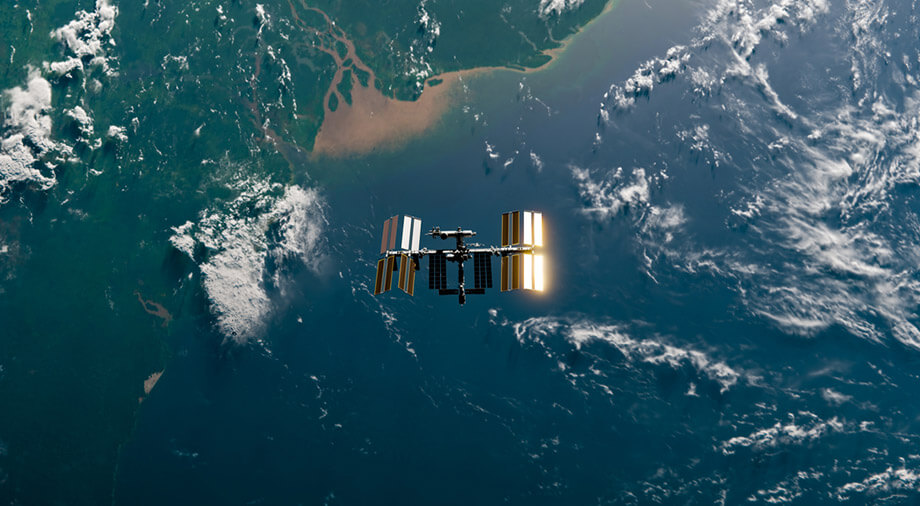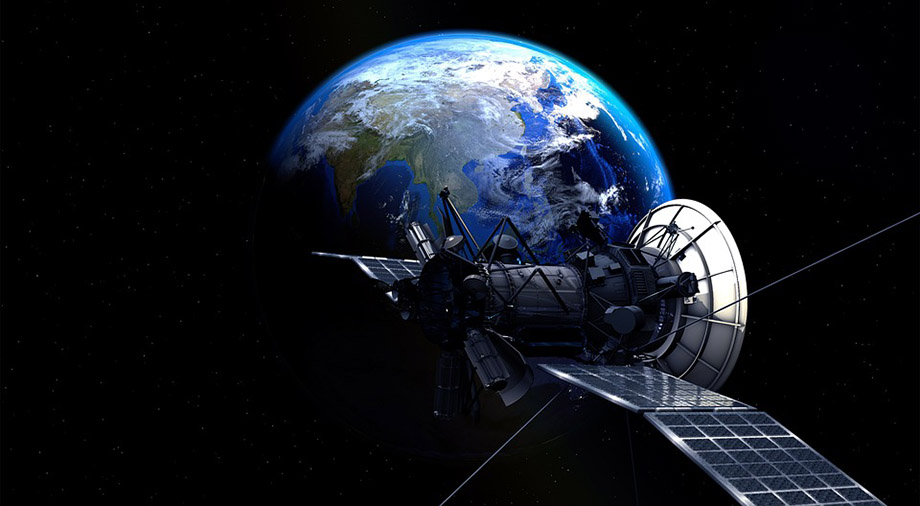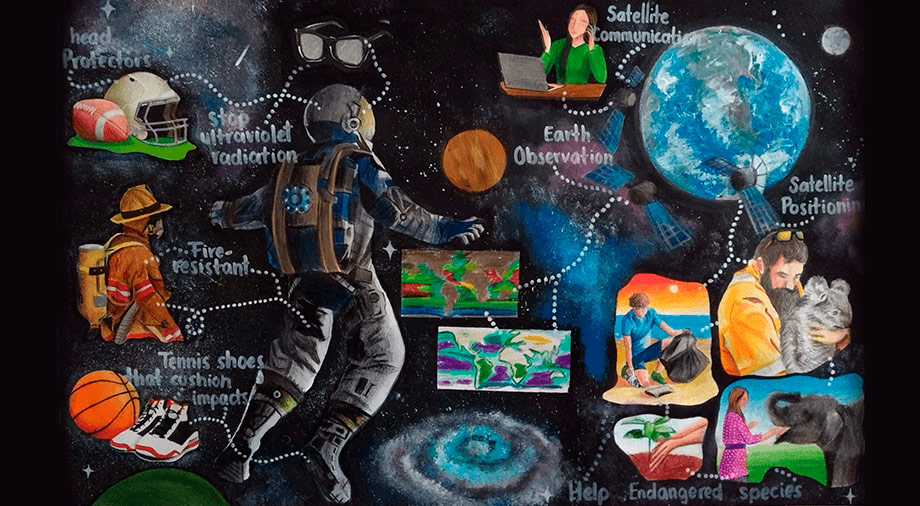Over three thousand man-made satellites orbit the Earth, each serving a useful purpose. They provide us with global communications, navigation systems, and even gather precise data about the problems facing our planet – from pollution levels to natural disasters, helping to achieve the UN’s Millennium Development Goals.
In this article, MaxPolyakov.Space discusses the usefulness of low Earth orbit, and the potential it holds for humankind’s development.
At night, without a telescope, you can see only a small part of the universe. The furthest object that we can see with our own eyes is the faded spot of the Andromeda galaxy, approximately 2.5 million lightyears from Earth.
Low Earth orbit is quite a bit closer, only a few hundred kilometers from Earth.
Thanks to studies of low Earth orbit, we developed satellite television, wireless internet, accurate weather forecasts, and GPS – satellite-enabled navigation capable of geolocating a smartphone in almost any corner of the Earth to within 6-8 meters of its position.
While scientists continue to use technology to explore low Earth orbit, unfortunately, many people undervalue its worth. For example, in the U.S., only 5% of people consider themselves well informed about space research, and in the European Union, a little over a third of people could explain the function of the European Space Agency.
Many people can’t even guess at how often space technologies are used for the most basic of tasks.
One example are smartphones – on average, people use smartphones for over two hours a day, including for navigation, which simply wouldn’t work without satellites. Just ten years ago, it was quite easy to get lost in a new city due to the lack of this technology.
This everyday functionality is facilitated by artificial satellites, which number over 3,000. The largest grouping of satellites are owned by the United States – 1,800.
What is low Earth orbit?
An orbit is a trajectory of rotation of one heavenly body around another with a much greater mass. For example, the Earth around the Sun or the Moon around the Earth.
The orbit surrounding the Earth is known as the low Earth orbit. This is a rough sphere around the planet, starting from the surface to about 2,000km above sea level. It’s most commonly used to signify the orbits of space technologies orbiting the Earth, specifically those at an altitude of about 160km (with an orbital period of 88 minutes) to about 2,000km (approximately 127 minutes.)
For comparison, the highest altitude civilian airplanes can reach doesn’t exceed 20km. A Boeing 737 passenger plane, flying from Kyiv, Ukraine to Berlin, Germany, has an average altitude of 7km. It would need to increase its altitude by twenty times just to reach orbit. Artificial satellites and the International Space Station are both located in low Earth orbit. All manned space flights (with the exception of lunar flights), occur in low Earth orbit.
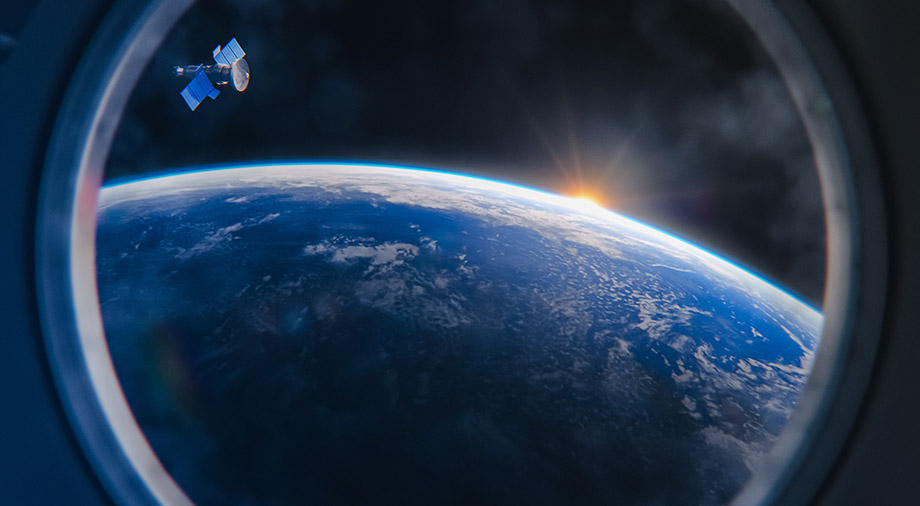
The modern idea of an ‘orbit’ was developed by Polish astronomer Nicholas Copernicus in the 16th century, who noted that the Earth was the same sort of planet as Venus and Saturn, and all planets orbit the Sun. Scientists further developed this theory over the next century, calculating the rotation periods of the planets and discovering satellites around several of them, until at last the ancient idea that the Earth was the center of the universe was discarded to the dustbin of history.
Science has explained that heavenly bodies stick together, which creates a stable system consisting of a star in the center, orbited by planets. At the end of the 17th century, Isaac Newton named the power keeping this system together – gravity.
If the scientists of those times only aspired to understand nature, the scientists of the 19th century wanted to go outside the ordinary. At that time, the noted writer Jules Verne was the first to describe a fantastical flight from the Earth to the Moon. Scientists then developed a theory of rocketry for space launches, and after the Second World War, the United States, the Soviet Union, and other countries began actively developing this technology – in particular for military aims.
For example, the first artificial satellite was the Soviet Sputnik-1, launched in 1957 with the help of an intercontinental ballistic missile (ICBM.) This launch was a breakthrough in science: thanks to Sputnik-1, it became possible to research the upper layers of the atmosphere – something previously impossible. Further satellites continued to produce breakthroughs – for example, thanks to the US Explorer 1 satellite, launched in 1958, the radiation belt was discovered.
How orbits work
The orbits around the Earth are not identical, and astronomy divides them by height.
At an altitude of 35,000km above sea level is the geo-stationary orbit, which allows space-based technology to rotate simultaneously with the Earth – in other words, “hovering” at the same longitude as some chosen point.
This orbit is critically important for weather forecasting, because satellites in geo-synchronous orbits can, from a large height, always track the same points on Earth.
How does that work? When a user goes to a weather forecasting site to check the weather, they see a satellite image of their own area. Special satellites, set in geo-stationary orbit, relay these images to the site. This occurs on an update cycle of every few minutes, sending data about cloud cover, humidity, and wind in order to provide a forecast of the weather in that area.
There are a few other orbits as well. The Molniya orbit, for example, has an elongated elliptical orbit, meaning that one end is closer to the Earth than the other. All known orbits are described in the NASA catalog.
The closest orbit to us is the low Earth orbit, set, as mentioned previously, at an altitude of 160km to 2,000km above sea level. Most satellites, and the ISS, are found here – about 2,000 artificial satellites in total.
Humans cannot survive in low Earth orbit without some sort of life-support system, for example the kinds used by astronauts in open space.
However, low Earth orbit isn’t a complete vacuum – traces of atmospheric gases can be found there. These gases have a small, but not insignificant, effect on orbiting objects, similar to the effect that air currents have on bullets – even if the effect is several times weaker than that. The temperature at low Earth orbit hovers at about 10C. Roughly speaking, this orbit is considered relatively close to the surface, meaning that similarities to surface atmospherics aren’t entirely surprising.
Many satellites in orbit work for the benefit of mankind, and some have been in operation for 15 years.
But these orbits don’t hold indefinitely – their ‘orbital lifespan’ usually lasts from a few weeks to a few decades, depending on altitude. This means that there are non-functioning objects in orbit as well, nicknamed ‘space junk.’ Space companies and organizations around the world are concerned with their clean-up, because they present a danger for working satellites: space junk can collide and cause damage to functioning objects. Removing space junk, as a result, is critically important to ensure accurate data from satellites.
What use does orbit hold for humanity?
At the moment, thousands of artificial satellites circle the planet, meaning that space exploration goes hand in hand with economic development. According to data provided by NASA, space exploration doesn’t just drive technological and cultural development, but also regularly provides new perspectives on how to tackle the old problems we face here on Earth. It’s hard to imagine modern life without the technologies developed thanks to humankind’s exploration of space – improved solar panels which translate solar energy to electricity, medical technology, ultra-light metal alloys, water purification systems, advanced electronics and many more.
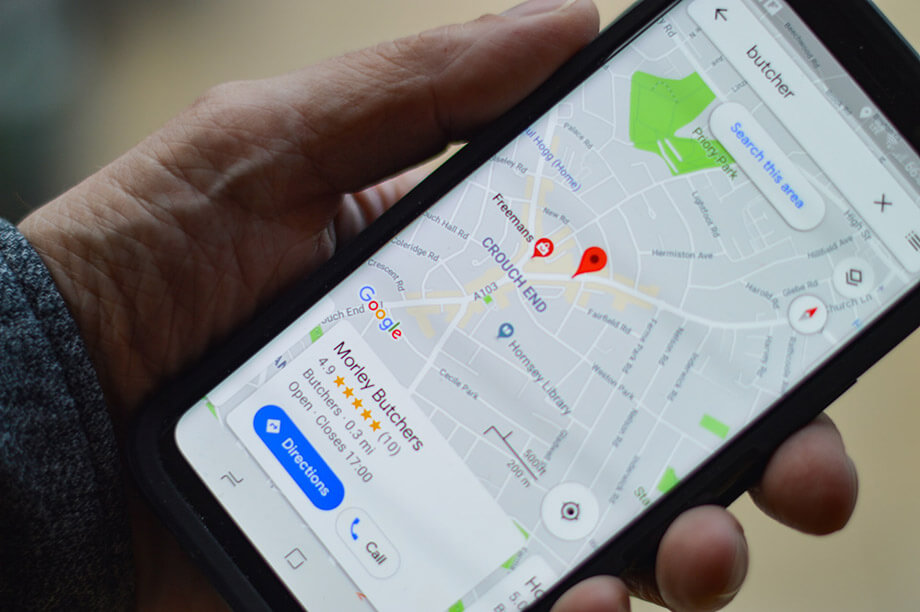
For example, here’s a non-comprehensive list of modern amenities available thanks to orbital technologies:
- Satellite television: Satellites send data directly to people’s homes, which are picked up by antennas and satellite dishes. Satellites also provide us with the ability to stream live broadcasts at a high quality of video and sound.
- Telecommunications:Phones in airplanes and satellite phones in remote or disaster areas unreachable by mobile networks are all possible only thanks to orbiting satellites.
- Internet: SpaceX has launched satellites for their Starlink global wireless internet project. By the end of the year, the company plans to launch 1.5 thousand units.
- Navigation: The Navstar Global Positioning System, better known as GPS, has an accuracy of up to 6-8 meters for a given GPS sensor. This helps not only with navigation in new cities and countries, but even for forest searches. For example, someone lost can simply send their GPS positioning data via an instant messenger, such as Telegram, with an accuracy of 10m to a friend looking for them. That friend can then simply plot a route to their lost comrade via his GPS-provided geolocation.
- Meteorology: Satellites provide us with the ability to create accurate weather forecasts on a global scale, as well as quickly track and analyze large-scale cataclysms such as volcano eruptions, forest fires, and so on. For example, the US National Oceanic and Atmospheric Administration’s (NOAA) satellites have assisted in conducting 48 thousand rescue operations since 1982.
- Land use: Satellites can help locate underground reservoirs and buried resources, record the movement of nutrients and toxic substances into groundwater, track the growth of algae in the seas, and monitor land erosion. Satellites are particularly used to track the status of massive infrastructure like oil and gas pipelines. Max Polyakov’s EOSDA is developing and disseminating the use of such technologies.
- Science: Thanks to the introduction of astronomical instruments to orbit, it became possible to research the depths of space without additional material restrictions. The Hubble Space Telescope allows us to view a much greater slice of space than we can with land-based telescopes, which run into atmospheric obstructions.
The use of low Earth orbit opens up new possibilities for business as well – for example, NASA believes that commercial projects can, in the future, create an independent, resilient, and quickly developing orbital economy, where private industry plays an important role.
Privately-financed launches would also allow for companies to conduct commercial research in orbit, for example in pharmaceuticals and even tourism. For this reason, a large amount of contracts have been allocated for private cargo deliveries to the ISS. For comparison, the capitalization of the global “space market” amounted to $176 billion in 2006, growing to $345 billion in 2018. In 2017 alone, commercial space firms received $3.9 billion in private investment.
According to forecasts by the NSR, the next ten years will see the number of satellites in orbit grow to 12 thousand. A single launch can provide revenues of over $130 billion. Morgan Stanely, one of the world’s largest financial firms, predicts that the total capitalization of the space industry will reach 1 trillion USD by 2040. By that time, over half of the active satellites will provide high-speed broadband internet, with costs less than 1% of today’s.
By the current day, launch costs have already been reduced by nearly four times. It’s not difficult to imagine the benefits for science and the economy in the future that low Earth orbit can provide. Tenders for under-sea cable laying will become a thing of the past, and companies will begin to compete for launch rights. Humanity has all the opportunities in the world in order to realize this potential. The important thing is to continue to develop according to plan and achieve new goals, in order to improve life on Earth.

